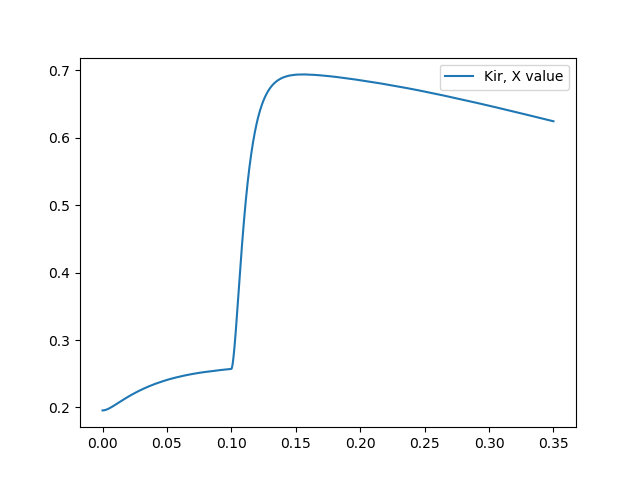This is the readme for the model and methods associated with the paper:
Jedrzejewski-Szmek Z, Abrahao KP, Jedrzejewska-Szmek J, Lovinger DM, Blackwell KT (2018) Parameter Optimization Using Covariance Matrix Adaptation-Evolutionary Strategy (CMA-ES), an Approach to Investigate Differences in Channel Properties Between Neuron Subtypes. Front Neuroinform 12:47 doi: https://doi.org/10.3389/fninf.2018.00047
The model and method are available in both modeldb and github however the associated data is only on github. In modeldb the model is in this archives mosse-nerp folder and the method is in the ajustador folder (optimization of python code). Please see the readme's in those folders.
Example model run: cd Jedrzejewski-SzmekEtAl2018/moose_nerp-1




 Below excerpts from the paper indicate the contents of the github repositories. Please see the paper for more details.
Below excerpts from the paper indicate the contents of the github repositories. Please see the paper for more details.
The parameters are optimized using the covariance matrix adaptation evolutionary strategy (https://github.com/CMA-ES/pycma).
To facilitate reproducibility, re-use and extension, the declarative model specification uses a modular format. The ion channel kinetics are specified in one file: (https://github.com/neurord/moose_nerp/blob/master/moose_nerp/d1d2/param_chan.py
Both the morphology file (either standard GENESIS .p files or .swc files are supported by MOOSE) and conductances (in units of Siemens/m2) are specified in a separate file (https://github.com/neurord/moose_nerp/blob/master/moose_nerp/d1d2/param_cond.py)
Explicit spines, calcium dynamics, and synaptic channels are each optional and specified in separate files. Calcium dynamics can be specified either with a single time constant of decay or utilizing various mechanisms such as calcium buffers, pumps and diffusion. Model stimulation, creation of output elements and model simulation are clearly and explicitly separated from the model creation. Parameter specification files are imported in https://github.com/neurord/moose_nerp/blob/master/moose_nerp/d1d2/__init__.py
The complete model specification is available at https://github.com/neurord/moose_nerp/ , with moose_nerp/d1d2 specifying the SP model parameters and moose_nerp/gp specifying the GPe model parameters.
The experimental data used for the optimizations are part of the python package waves, available at https://github.com/neurord/waves. The data consists of recordings from identified external globus pallidus neurons and unidentified striatal spiny projection neurons. As the data was collected for other purposes, the current injection protocol was implemented only once per neuron.
Feature extraction functions are specified in https://github.com/neurord/ajustador/blob/master/ajustador/features.py , and they are combined into a fitness function in https://github.com/neurord/ajustador/blob/master/ajustador/fitnesses.py.
Features are further described in the online documentation (https://neurord.github.io/ajustador/features.html and https://neurord.github.io/ajustador/fitnesses.html
For the simulations reported, the initial values were conductances from a roughly hand-tuned model to start the optimization in an area that exhibits spiking behavior (Supplementary Figure 1, also available at https://github.com/neurord/ajustador/tree/master/FrontNeuroinf/FigSuppl_initialconditions.jpg
Experimental data can be specified using one of two different file formats: Igor binaries or comma separated values. The traces for the experiments are placed in a separate subdirectory, e.g., gpedata_experimental, and the class Param in the python package waves (https://github.com/neurord/waves) specifies the onset and offset time of the injection current, as well as the time frame for measuring baseline membrane potential and steady state depolarization. Since the data specification is a separate module, adding support for other file formats is straightforward.
The python package ajustador is available at https://github.com/neurord/ajustador , and the scripts used to run the simulations are at https://github.com/neurord/ajustador/tree/master/FrontNeuroinf.
The convergence was determined from the change in mean fitness: the slope of the mean fitness across 25 generations must be <0.002 and the standard deviation of mean fitness across 25 generations must be less than 0.06 (implemented in https://github.com/neurord/ajustador/tree/master/ajustador/helpers/converge.py).